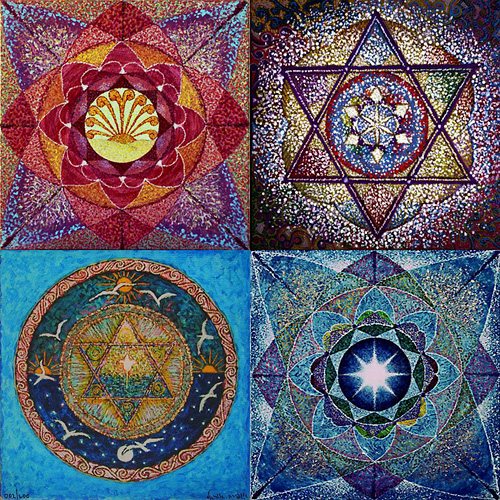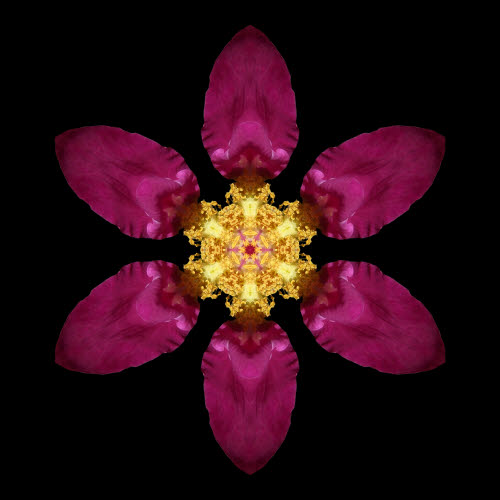
Mandalas by Ofira Oriel
Ofira Oriel is an Israeli artist and teacher. She is a graduate of Hadassah College in Jerusalem and of the Ramat Hasharon Seminary for Teachers of Art. She also has a degree in Education for children with special needs and eighteen years of experience in the field.
Ofira has studied numerous healing and spiritual arts, including Kabbalah, Jewish Meditation, Reiki, Healing through colors, Shamanism, and Bach Flower Therapy.
Her current focus is on the connection between painting and healing, and she leads seminars and workshops on these subjects. Here, she writes about her work in mandala painting, illustrated above.
Contact
e-mail: ofira@oriel-o.com
Website: http://www.oriel-o.com
More Mandala Paintings:
http://www.oriel-o.com/Gallery-view.asp?gid=17
http://www.oriel-o.com/Gallery-view.asp?gid=21
Discussion:
Painting Mandalas: Ofira Oriel
Painting Mandalas: Healing and Personal Development
Several years ago I went through a crisis, as a result of which I returned to painting, after a long hiatus.
I began all the paintings I made by looking for the central point on the canvas. I then described circles around that point. The circles created various shapes, such as bouquets, round ponds, the sun, and the moon. These became the center of the picture. I added different images around the center in a balanced and symmetrical way.
At the time I didn’t understand why I was obsessively repeating the same structure. At a certain stage that structure reminded me of paintings of mandalas which I had seen in Nepal many years ago. In the process of looking for material on the mandala I met Hava Bat Haim, a teacher of painting, a researcher in the field of children’s painting, and a leader of mandala painting workshops. With her help I understood that what I had been doing was part of a process of healing myself. Intuitively I was painting mandalic structures which helped me to concentrate and to experience the relaxing feeling of order and equilibrium within me. Since that time I have been studying the subject of the mandala.
We know of mandala paintings primarily from India and Tibet. From there the name of this structure has reached the west. Paintings with a mandalic structure have appeared, however, in various cultures throughout history, and the philosophical idea behind them is identical in all of them. The mandalic structure appears (with different names) in American Indian culture, in the culture of the Australian aborigine, in that of the Celts, and the Aztecs, and others. They appear in religious symbols. They appear in children’s paintings as part of the child’s natural development in his painting. They appear in nature in a large variety of forms. They appear in Carl jung’s theory, as part of his concept of therapy.
Temples in different cultures are built as mandalic structures. The holy temple in Jerusalem had a similar structure. Walking within it led us from the external to the internal, to the center of the temple, to the Holy of Holies. The central point of the mandala is parallel in the soul of man to the “spark of the soul” or, in the language of Hassidism, “the internal point.”
In the Book of Exodus is written, “Build me a temple and I shall dwell therein.” The temple, like a mandala, is perceived as the inner temple which exists in every one of us. Jung maintained that the mandala symbol describes the human soul. That same, central point symbolizes the self. Our central point is the function which is responsible for the integration of the varied and opposing forces in the human soul.
In the Zohar is written, “There exists no circle in the world which is not made from within a single point which is located in the center…and this point, which is located in the center, receives all the light, illuminates the body, and all is enlightened.” (Tishbi, Vol.1:247).
The English researcher Herbert Reid demonstrated that children draw mandalic designs spontaneously when asked to draw harmony and balance. He saw this as proof that the mandala is a basic form extant in the human soul. In so doing he sided with Jung’s opinion that the mandala is an archetypical form, whose source is in the depths of the human soul, and has forever been so. For that reason, mandala painting is called organic painting; a painting which springs from within the organism itself.
Mandala painting is intuitive painting. The center of the mandala is parallel to our own center; the one from which we come, and to which we will return. The process of painting enables us to contemplate ourselves. The manner in which the pencil moves on the paper reflects the way we move through reality. At the same time, it allows us to link up with the forces and abilities buried deep within our souls, and to bring them forth into the light. We enable ourselves to tap into the wavelengths we need by means of the link to colors, lines, and forms. This linkage in the structure of the mandala creates the feeling of balance.
According to the holistic approach, the creation of balance means healing.
Ofira Oriel, painter
© 2008, Ofira Oriel
More from Beliefnet and our partners

